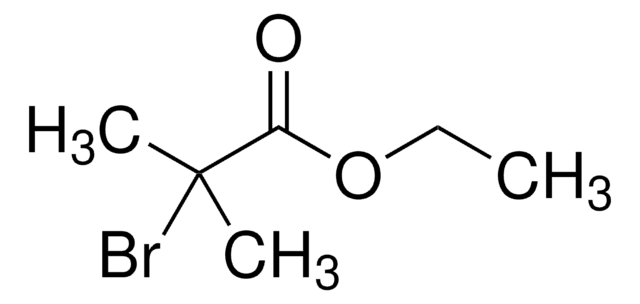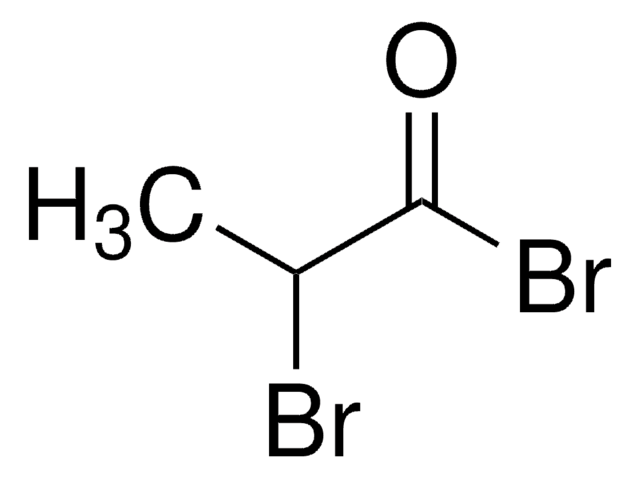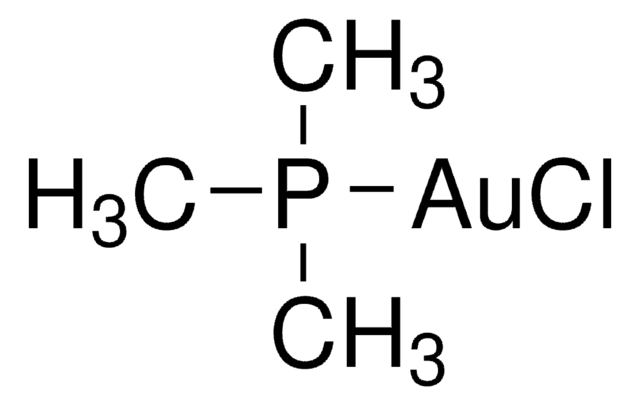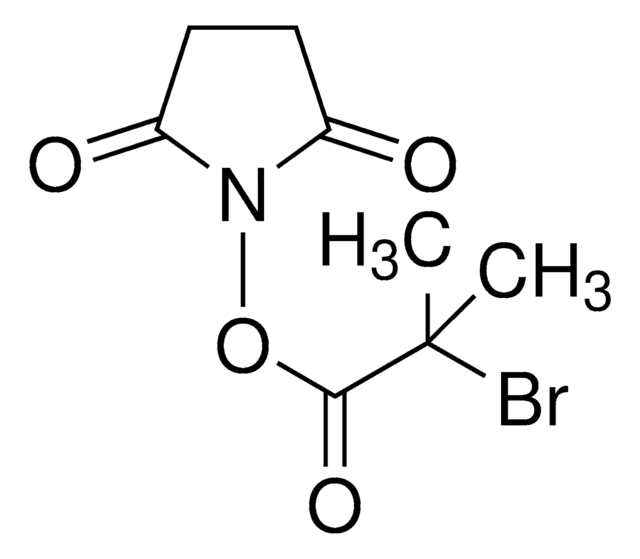About This Item
추천 제품
Quality Level
분석
98%
양식
liquid
refractive index
n20/D 1.507 (lit.)
bp
162-164 °C (lit.)
density
1.86 g/mL at 25 °C (lit.)
작용기
acyl bromide
bromo
SMILES string
CC(C)(Br)C(Br)=O
InChI
1S/C4H6Br2O/c1-4(2,6)3(5)7/h1-2H3
InChI key
YOCIJWAHRAJQFT-UHFFFAOYSA-N
유사한 제품을 찾으십니까? 방문 제품 비교 안내
일반 설명
애플리케이션
- as atom transfer radical polymerization (ATRP) initiator for functionalization of hydroxyl groups present on the surface of graphene oxide
- to form an N-protected halodienamide which provided four- and five-membered lactams in the presence of copper (I) and a tertiary amine
- in preparation of polycaprolactone macroinitiator via reaction with oligomeric caprolactone diol and mesoporous silica nanoparticles with ATRP initiator anchored on the exterior surface
신호어
Danger
유해 및 위험 성명서
Hazard Classifications
Eye Dam. 1 - Skin Corr. 1B
Storage Class Code
8A - Combustible corrosive hazardous materials
WGK
WGK 3
Flash Point (°F)
>230.0 °F
Flash Point (°C)
> 110 °C
개인 보호 장비
Faceshields, Gloves, Goggles, type ABEK (EN14387) respirator filter
이미 열람한 고객
문서
We presents an article about Copper(I)-mediated Living Radical Polymerization in the Presence of Pyridylmethanimine Ligands, and the emergence of living radical polymerization mediated by transition metal catalysts in 1995, which was a seminal piece of work in the field of synthetic polymer chemistry.
Applying ARGET ATRP to the Growth of Polymer Brush Thin Films by Surface-initiated Polymerization
프로토콜
We presents an article about ARGET ATRP, and its procedure for PMMA polymer brush growth. Surface preparation before polymer brush growth consists of two steps: surface cleaning and initiator monolayer deposition.
Sigma-Aldrich presents an article about the typical procedures for polymerizing via ATRP, which demonstrates that in the following two procedures describe two ATRP polymerization reactions as performed by Prof. Dave Hadddleton′s research group at the University of Warwick.
자사의 과학자팀은 생명 과학, 재료 과학, 화학 합성, 크로마토그래피, 분석 및 기타 많은 영역을 포함한 모든 과학 분야에 경험이 있습니다..
고객지원팀으로 연락바랍니다.










![Bis[2-(2-bromoisobutyryloxy)undecyl] disulfide 97%](/deepweb/assets/sigmaaldrich/product/structures/340/293/c46f0349-d50c-48d8-899f-e42b09fae485/640/c46f0349-d50c-48d8-899f-e42b09fae485.png)